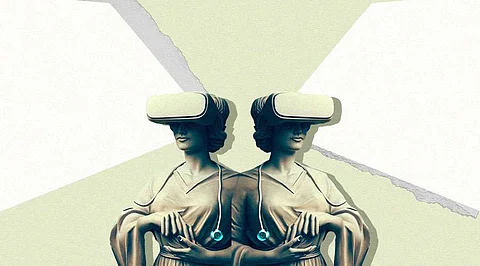

Virtual reality (VR) is a technology that creates immersive and realistic simulations of various environments and scenarios. VR has many applications in healthcare, such as medical education, training, diagnosis, treatment, and rehabilitation. In this article, we will explore how VR is changing medicine, what are the benefits and challenges of using VR in healthcare, and what are some of the current and future VR solutions that are transforming health care.
VR is changing medicine by providing new ways of learning, practicing, and delivering health care. VR can create realistic and interactive simulations of human anatomy, physiology, pathology, and procedures that can enhance the knowledge and skills of medical students, professionals, and patients. VR can also create virtual scenarios that can mimic real-life situations and challenges that healthcare workers may face, such as emergencies, disasters, or pandemics. VR can also create virtual environments that can help patients cope with various health conditions.
Using VR in healthcare can have many benefits, such as:
Improving education and training: VR can provide a safe and cost-effective way of teaching and learning medical concepts and skills. VR can also provide feedback and assessment that can help learners improve their performance and confidence.
Enhancing diagnosis and treatment: VR can provide a more accurate and detailed visualization of the human body and its functions. VR can also enable remote consultation and collaboration among healthcare professionals. VR can also provide personalized and immersive therapies that can improve the outcomes and satisfaction of patients.
Reducing costs and risks: VR can reduce the need for expensive and scarce resources, such as cadavers, equipment, or facilities. VR can also reduce the exposure to harmful substances or infections. VR can also reduce the stress and fatigue of healthcare workers.
VR adoption in the healthcare sector, however, faces obstacles. The size and price of VR hardware are among the technical hurdles preventing its widespread adoption. Certain healthcare facilities may also be constrained by the resolution and computer setup of the gadgets. Furthermore, the implementation of electronic medical records may necessitate specialized technological know-how due to the healthcare industry's reliance on paper-based methods. Notwithstanding these obstacles, experts think that they can be cleared in the upcoming years.
Join our WhatsApp Channel to get the latest news, exclusives and videos on WhatsApp
_____________
Disclaimer: Analytics Insight does not provide financial advice or guidance. Also note that the cryptocurrencies mentioned/listed on the website could potentially be scams, i.e. designed to induce you to invest financial resources that may be lost forever and not be recoverable once investments are made. You are responsible for conducting your own research (DYOR) before making any investments. Read more here.
